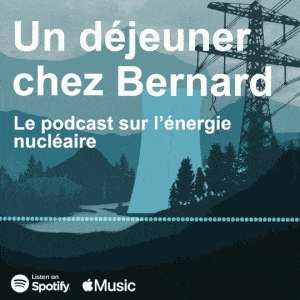Page publiée en ligne le 25 juillet 2013
Sur cette page :
• Sellafield radioactive discharges : Breach of international convention in normal operation (Yves Marignac)
• À voir également sur le site de Global Chance (dossiers et publications)
SELLAFIELD RADIOACTIVE DISCHARGES :
BREACH OF INTERNATIONAL CONVENTION IN NORMAL OPERATION
Yves Marignac, IPFM Blog, February 25, 2011
(IPFM : International Panel on Fissile Materials)
A report published on 17 February 2011, calling the UK Sellafield site « the dirty old man of Europe » (1), points to plans for further increases in radioactive discharges to the atmosphere and the Irish sea. The discharges are dominated by the reprocessing plants on the site, together with the French reprocessing site of La Hague already by far the largest source of releases of artificial radioactivity into the environment in the world today - tagged with discharging thousands of times those of a Western European nuclear power plant. Discharges of both plants have been a major health concern, with evidence of childhood leukemia clusters around both sites, and for the environment, with significant radioactive contamination found as far as the Norwegian coast. Reducing the marine contamination from these plants is a key feature of the OSPAR (Oslo-Paris) Convention (2), the legal instrument guiding international cooperation on the protection of the marine environment of the North-East Atlantic, to which UK, France and 13 other European States are Contracting Parties, together with the European Commission.
The report, by Cumbrians Opposed to a Radioactive Environment (CORE), found the planned evolution of discharges from the Sellafield site to be in breach of official targets agreed to by the UK Government. As early as 1998, at the OSPAR Convention meeting in Sintra, Portugal, the Government committed to "progressive and substantial reduction" of discharges aiming for concentrations of (man-made) radioactivity in the marine environment, above historic levels, coming « close to zero » by 2020.
Discharges of the reprocessing plants at Sellafield, B205 and the Thermal Oxide Reprocessing Plant (THORP) have decreased in recent years as a consequence of very low reprocessing rates following technical problems and incidents. CORE’s report reveals that the site owner, the Nuclear Decommissioning Authority (NDA), is preparing to increase reprocessing rates, although that implies « not to meet the OSPAR deadline ». Discharge levels are strongly correlated to the quantities of spent fuel reprocessed. The NDA projects to reprocess 4,700 tons of Magnox spent fuel at B205 in the next six years, doubling the rate compared to the past five years, and at least 3,700 tons of Advanced Gas Cooled Reactors (AGR) fuel. The plan also includes extending THORP’s lifetime to 2020 to allow for the reprocessing, delayed until now, of 600 tons of foreign Light Water reactor (LWR) fuel. The « crash programme of reprocessing », as CORE calls NDA’s further backing of reprocessing with no search for alternatives, will increase the impact on international waters.
NDA’s plans would also reinforce and extend the risk of catastrophic contamination in the case of an accident. The main danger relates to the stockpiles of liquid high level waste (HLW) produced by reprocessing which the plant has been unable to condition (vitrify) appropriately. The Norwegian Radiation Protection Authority (NRPA) published a report (3) in January 2011 showing predicted estimates of environmental consequences for Norway (4) due to a hypothetical accidental release of 1% of the current stocks in HLW tanks. Under common autumnal weather conditions, NRPA found the ceasium 137 fallout in Norway could be seven times higher than in the case of the Chernobyl accident.
Notes :
(1) Cumbrians Opposed to a Radioctive Environment (CORE) : Still the Dirty Old Man of Europe – Sellafield, Press release, February 17, 2011.
(2) OSPAR Convention - Protecting and conserving North-East Atlantic and its resources : http://www.ospar.org
(3) Norwegian Radiation Protection Authority (NRPA) : Consequences in Norway after a hypothetical accident at Sellafield - Predicted impacts on the environment (pdf, 2.9 Mo), December 20, 2010.
(4) Norwegian Radiation Protection Authority (NRPA) : Consequences in Norway after a hypothetical accident at Sellafield, Press release, January 25, 2011.
À VOIR ÉGALEMENT SUR LE SITE DE GLOBAL CHANCE
Dossiers thématiques
Publications de Global Chance
Publications des membres de l’association
Dossiers thématiques
Fukushima : réactions en chaîne
Tribunes, analyses, interviews, etc. : les réactions des membres de Global Chance face à la catastrophe nucléaire de Fukushima.
Nucléaire : par ici la sortie !
Rapports, analyses, tribunes, interviews, etc. : les propositions de Global Chance et de ses membres pour, enfin, sortir du nucléaire.
Publications de Global Chance
(encadré = plus d’informations au survol)
Nucléaire : le déclin de l’empire français
Les Cahiers de Global Chance, n°29, avril 2011, 112 pages
Nuclear power, the great illusion. Promises, setbacks and threats
Les Cahiers de Global Chance, n°25, English version, October 2008, 112 pages
Petit mémento des déchets nucléaires
Éléments pour un débat sur les déchets nucléaires en France
Les Cahiers de Global Chance, hors-série n°2, septembre 2005, 48 pages
Publications de membres de Global Chance
(encadré = plus d’informations au survol)
Les combustibles MOX d’EDF, production et stockages, bilans 2011 (pdf, 1.3 Mo)
André Guillemette & Jean-Claude Zerbib, in Des questions qui fâchent : contribution au débat national sur la transition énergétique, Les Cahiers de Global Chance, n°33, mars 2013
Les piscines de La Hague (pdf, 490 ko)
Jean-Claude Zerbib, Ghislain Quetel, André Guillemette, in L’énergie et les présidentielles : décrypter rapports et scénarios, Les Cahiers de Global Chance, n°51, mars 2012
Sûreté nucléaire en France post-Fukushima. Analyse critique des évaluations complémentaires de sûreté (ECS) menées sur les installations nucléaires françaises après Fukushima
Arjun Makhijani et Yves Marignac, Rapport d’expertise IEER / WISE-Paris, 176 pages, lundi 20 février 2012
Nucléaire : « Il n’y a aucun intérêt à conserver le MOX »
Bernard Laponche, Le Journal du Dimanche, dimanche 20 novembre 2011
Entre silence et mensonge. Le nucléaire, de la raison d’état au recyclage « écologique »
Bernard Laponche, entretien avec Charlotte Nordmann, La Revue internationale des Livres & des idées, n°14, novembre-décembre 2009
Le vieillissement des installations nucléaires : un processus mal maîtrisé et insuffisamment encadré
Yves Marignac, Contrôle, dossier n°184 : « La poursuite d’exploitation des centrales nucléaires », juillet 2009
 Global Chance
Une expertise indépendante sur la transition énergétique depuis 1992
Global Chance
Une expertise indépendante sur la transition énergétique depuis 1992





